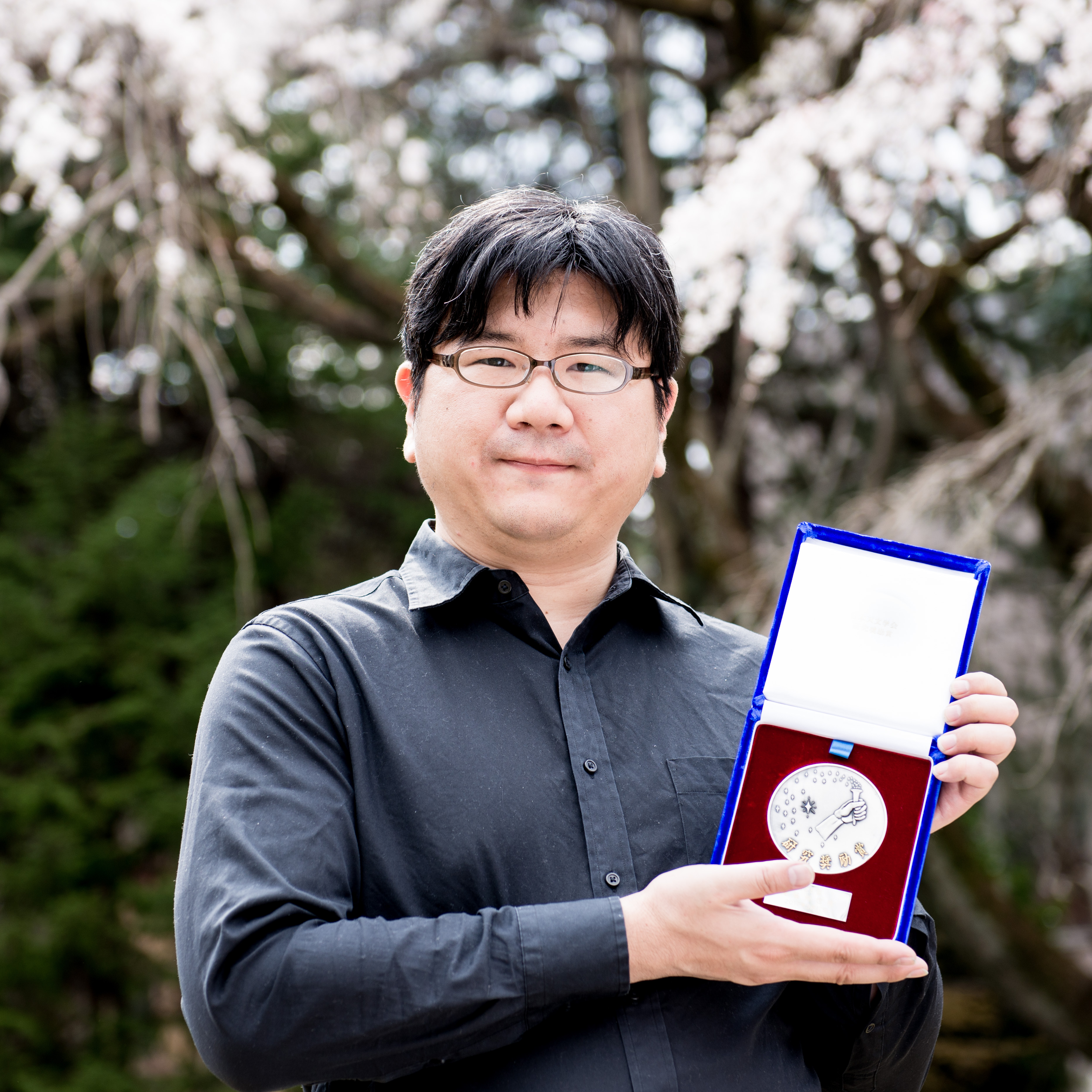
Dr. Tomoya Takiwaki
Dr. Tomoya Takiwaki*, an assistant professor in the Division of Theoretical Astronomy, received the ASJ Young Astronomer Award 2016. This is an award that the Astronomical Society of Japan has been awarding since 1988. It is given to young astronomers who have produced excellent research results. Two researchers including Dr. Takiwaki received the award this year. The awards ceremony and award lectures were held at the spring 2016 meeting of the Astronomical Society of Japan at Kyushu University. The theme of Dr. Takiwaki's recognized research is "theoretical research on the mechanism of core-collapse supernova explosions using massively-parallelized three-dimensional simulations." He was recognized for making progress in understanding the mechanism of supernova explosions through simulation research.
(This article was posted on March 28, 2017.)
* Dr. Tomoya Takiwaki is also an Assistant Professor at Graduate University for Advanced Studies (SOKENDAI), Department of Astronomical Science
Dr. Takiwaki’s research investigates the mechanism of core-collapse supernova explosions, which occur at the end of the life of a star whose mass exceeds 8 times that of the Sun. Although research on supernova explosions has been conducted for nearly 50 years, there are still many mysteries about their mechanisms. Even though the simulation method has advanced, for many years it has been considered difficult to simulate the explosions through numerical calculation.
Dr. Takiwaki focused on neutrinos emitted from proto-neutron stars formed during core collapse, and developed his unique calculation code for neutrino radiation hydrodynamics. Using this code, he simulated the core-collapse supernova explosions in high-resolution three-dimensional simulations on supercomputers such as “K Computer” at RIKEN and “ATERUI” at NAOJ. As a result, he clarified the mechanism through which the shock wave generated by the neutrino-heating is pushed outward and leads to the explosion. In addition, he focused on the star’s rotation and carried out world-leading three-dimensional simulations of a rotating core-collapse supernova. He discovered a new mechanism where the proto-neutron star distorted by rotation acts like a screw and stirs the surrounding matter; this leads to efficient neutrino-heating and causes the explosion.
In addition to these achievements, the calculation method developed by Dr. Takiwaki made it possible to construct a three-dimensional supernova model that can be compared with observation results. Neutrinos and gravitational waves radiated from the explosions are important observation targets for understanding supernovae. In addition, a research team lead by Dr. Takiwaki is developing a simulation code to realize three-dimensional long-time computation of supernova explosions using the next generation of the "K computer".
Thus, through these leading-edge massively-parallelized three-dimensional simulations, Dr. Takiwaki revealed the importance of neutrino-heating and the star’s rotation, which can trigger the supernova explosion. He made a big contribution to understanding the explosion mechanism. Furthermore, he is expected to play a central role in next-generation supercomputer simulations and next-generation observations investigating supernovae. For these reasons, he was awarded the ASJ Young Astronomer Award 2016.
“I feel honored to win this wonderful prize.” said Dr. Takiwaki about his award. He continued and said, “At the beginning of the research, there were many difficulties. The simulating code did not work well, computation efficiency was poor, and a drastic review was necessary. I am delighted because my hard work, struggling to solve the difficulties one by one, paid off. After that, the small-scale simulation became a large-scale simulation. After it reached the stage of predicting the next generation observations, I had the luck to work with many co-researchers. I have received many congratulations from them about this award. A German poet, Friedrich Schiller said, ‘Friendship doubles our joy and halves our grief.’ I feel delighted to share the pleasure of receiving a prize like this with many collaborators. I feel courageous enough to attempt more difficult research than I did before. Please watch for future research projects.”
His research was carried out with the support of MEXT HPCI Strategic Program Field 5 “The origin of matter and the universe”; Priority Issue 9 to be Tackled Using Post K Computer “Elucidation of the Fundamental Laws and Evolution of the Universe”; and the Joint Institute for Computational Fundamental Science (JICFuS).
Related Links